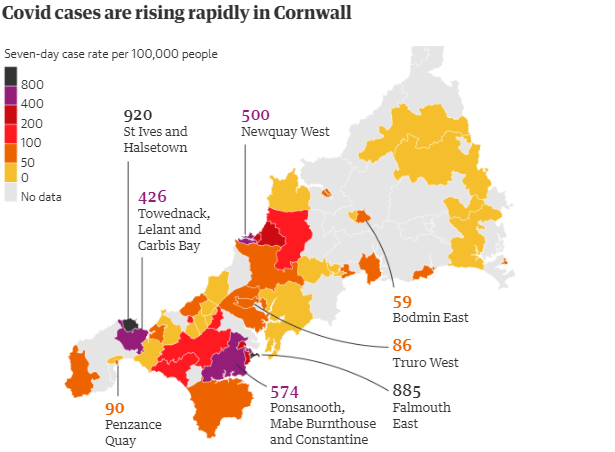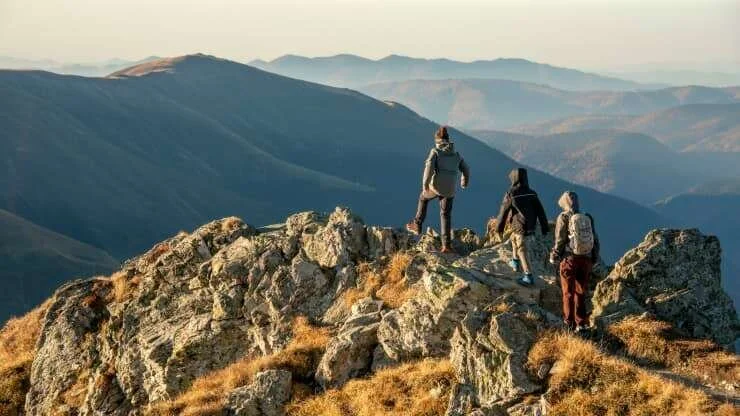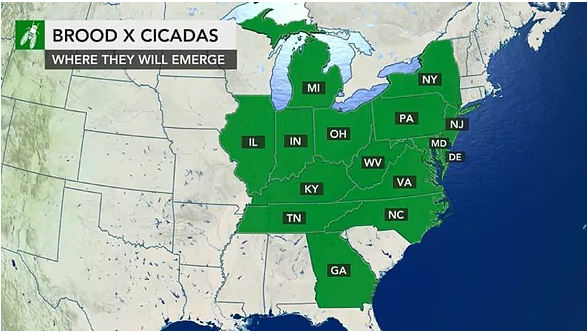Christopher Flavelle & Kalen Goodluck
Pierre Augare, a member of the Quinault Nation in Taholah, Wash., a community on the Olympic Peninsula that has been planning a retreat from the ocean for almost a decade.Credit...Josué Rivas for The New York Times
Many Native people were forced into the most undesirable areas of America, first by white settlers, then by the government. Now, parts of that marginal land are becoming uninhabitable.
In Chefornak, a Yu’pik village near the western coast of Alaska, the water is getting closer.
The thick ground, once frozen solid, is thawing. The village preschool, its blue paint peeling, sits precariously on wooden stilts in spongy marsh between a river and a creek. Storms are growing stronger. At high tide these days, water rises under the building, sometimes keeping out the children, ages 3 to 5. The shifting ground has warped the floor, making it hard to close the doors. Mold grows.
“I love our building,” said Eliza Tunuchuk, one of the teachers. “At the same time, I want to move.”
The village, where the median income is about $11,000 a year, sought help from the federal government to build a new school on dry land — one of dozens of buildings in Chefornak that must be relocated. But agency after agency offered variations on the same response: no.
From Alaska to Florida, Native Americans are facing severe climate challenges, the newest threat in a history marked by centuries of distress and dislocation. While other communities struggle on a warming planet, Native tribes are experiencing an environmental peril exacerbated by policies — first imposed by white settlers and later the United States government — that forced them onto the country’s least desirable lands.
And now, climate change is quickly making that marginal land uninhabitable. The first Americans face the loss of home once again.
Chefornak, Alaska, where the foundations of many buildings are failing as the permafrost thaws, in April. Credit...Ash Adams for The New York Times
In the Pacific Northwest, coastal erosion and storms are eating away at tribal land, forcing native communities to try to move inland. In the Southwest, severe drought means Navajo Nation is running out of drinking water. At the edge of the Ozarks, heirloom crops are becoming harder to grow, threatening to disconnect the Cherokee from their heritage.
Compounding the damage from its past decisions, the federal government has continued to neglect Native American communities, where substandard housing and infrastructure make it harder to cope with climate shocks.
The federal government is also less likely to help Native communities recover from extreme weather or help protect them against future calamities, a New York Times review of government data shows.
Interviews with officials, members and advisers at 15 federally recognized tribes portray a gathering climate crisis and a test of the country’s renewed focus on racial equity and environmental justice.
Many tribes have been working to meet the challenges posed by the changing climate. And they have expressed hope that their concerns would be addressed by President Biden, who has committed to repairing the relationship with tribal nations and appointed Deb Haaland, the first Indigenous cabinet secretary, to run the Interior Department. But Mr. Biden has announced few specific policies or actions to directly reduce the climate risk already facing Native communities, and Ms. Haaland’s office declined repeated requests for an interview.
“The stakes are very, very high,” said Fawn Sharp, president of the National Congress of American Indians. “We’re running out of time.”
Forced Off Their Land, Again
Fawn Sharp, former president of the Quinault Nation and president of the National Congress of American Indians. “The stakes are very, very high,” she said.Credit...Josué Rivas for The New York Times
The Quileute Nation is a collection of about 135 homes on a narrow slice of land at the edge of the Olympic Peninsula that juts into the Pacific, about 100 miles west of Seattle.
As temperatures rise, the atmosphere holds more water, producing more frequent and intense storms. High winds now regularly knock out the electricity, while homes along the main street are vulnerable to flooding. The single road that connects the community to the outside world is often rendered impassable by water.
“The village is 10 to 15 feet above sea level,” said Susan Devine, a project manager who is working with the Quileute. During major storms “those waves are bigger than you,” she said.
Hundreds of years ago, the reservation was a fishing village, among many locations used by the Quileute as they moved according to the demands of the weather.
That changed in 1855 when a treaty stripped the tribe of most of its land; President Grover Cleveland later issued an executive order confining the Quileute to a single square mile — all of it exposed to flooding.
“No one chose to be in a seasonal fishing area year-round,” Ms. Devine said.
The resulting vulnerability has pushed the tribe to pursue a solution that few non-Native towns in the United States have seriously considered: Retreating to higher ground.
A totem pole in Taholah, Wash., that was carved to commemorate the 2013 Tribal Canoe Journey, an annual event for Pacific Northwest tribes.Credit...Josué Rivas for The New York Times
Taholah is exposed to storms and flooding but the tribe has struggled to get enough federal help to relocate.Credit...Josué Rivas for The New York Times
“Climate change has forced us to make the heart-wrenching decision to leave the village,” Doug Woodruff, chairman of the Quileute Tribal Council, said in a December statement. “Without a cohesive national and international strategy to address climate change, there is little we can do to combat these impacts.”
Through a spokeswoman, Mr. Woodruff and other members of the council declined repeated requests to be interviewed.
In 2012, Congress gave the tribe permission to relocate inside the adjacent Olympic National Park. But without a tax base to pay for its move, the tribe sought federal money. Progress has been slow: The Quileute received about $50 million in grants to build a new school farther from the coast, but the total cost to relocate homes and other facilities could be two or three times that much, according to Larry Burtness, who manages federal grant applications for the Quileute.
Forty miles south, the Quinault tribe has been working on its own plan to retreat from Taholah, the reservation’s main town, for almost a decade. Tucked between a driftwood-strewn beach and a coastal rainforest, Taholah is exposed to storms, flooding and frequent power outages. That tribe has also struggled to get federal help.
“There’s no single source of revenue, at a state level or congressionally, to undertake these kinds of projects,” said Ms. Sharp, who was president of Quinault Nation until March.
A Struggle for Federal Aid
The federal government offers help to communities coping with the effects of climate change. But Native Americans have often been less able to access that help than other Americans.
“We’re the most disproportionately impacted by climate, but we’re the very least funded,” said Ann Marie Chischilly, executive director of the Institute for Tribal Environmental Professionals at Northern Arizona University.
The Federal Emergency Management Agency is less likely to grant requests for aid from native tribes recovering from disaster, compared to non-Native communities, according to FEMA data.
Native Americans are also less likely to have flood insurance, making it harder to rebuild. Of 574 federally recognized tribes, fewer than 50 participate in the National Flood Insurance Program, according to a review of FEMA data.
That’s partly because the federal government has completed flood maps for just one-third of federally recognized tribes, compared with the vast majority of counties. Flood maps can help tribal leaders more precisely understand their flood risks and prompt residents to purchase flood insurance.
But insurance premiums can be prohibitively expensive for Native Americans.
Individual households on Native lands are also less likely to get federal help girding for disasters. Of the 59,303 properties that have received FEMA grants since 1998 to prepare for disasters, just 48 were on tribal lands, according to Carlos Martín, a researcher at the Urban Institute.
Anna Abraham, Chefornak’s mayor, grew up hearing stories from elders about how the weather would warm. “I never thought that I’d be living to see it,” she said.Credit...Ash Adams for The New York Times
Chefornak’s preschool sits on stilts in thawing permafrost. At high tide, water reaches the building, which needs to be moved to safer land. Credit...Ash Adams for The New York Times
A home that collapsed into the eroding coast. Its former occupant, Delores Abraham, now lives in a city building that was designated as a pandemic quarantine space.Credit...Ash Adams for The New York Times
FEMA said it is committed to improving tribal access to its programs.
Chefornak’s efforts to relocate its preschool illustrate the current difficulties of dealing with the federal government.
While FEMA offers grants to cope with climate hazards, replacing the school wasn’t an eligible expense, according to Max Neale, a senior program manager at the Alaska Native Tribal Health Consortium, who helped Chefornak search for federal aid.
The Department of Housing and Urban Development has a program to pay for infrastructure on tribal lands, but the maximum amount available wasn’t enough for a new school, and the agency wouldn’t grant money until the village had found other ways to make up the difference, Mr. Neale said.
HUD declined to comment on the record.
Replacing the preschool would only begin to address Chefornak’s troubles. Some two dozen homes need to be relocated, potentially costing more than $10 million, according to Sean Baginski, an engineer working with the village. And Chefornak is just one of more than 100 Native villages in Alaska alone that are exposed to significant climate risks.
“If the intent is for the government to find a way to fund this stuff,” Mr. Baginski said, “now would be a good time.”
Living Without Water
Damian Cabman, a member of the Navajo tribe, filled buckets of water to take home at the Bataan water loading station in Gallup, N.M. Many tribe members had relied on wells that have run dry with climate change. Credit...Kalen Goodluck for The New York Times
Twice a week, Vivienne Beyal climbs into her GMC Sierra in Window Rock, a northern Arizona town that is the capital of Navajo Nation, and drives 45 minutes across the border into New Mexico. When she reaches the outskirts of Gallup, she joins something most Americans have never seen: a line for water.
Ms. Beyal’s destination is a squat concrete building that looks like a utility shed, save for the hoses that extend from either side. Once there, she waits as much as half an hour for her turn at the pump, then fills the four 55-gallon plastic barrels in the back of her truck.
The facility, which is run by the city of Gallup, works like an air pump at a gas station: Each quarter fed into the coin slot buys 17 gallons of water. Most of the people in line with Ms. Beyal are also Navajo residents, crossing into New Mexico for drinking water. “You can show up whenever you want,” she said. “As long as you can pay for it.”
Ms. Beyal has lived in Window Rock for more than 30 years and once relied on the community well near her home. But after years of drought, the water steadily turned brown. Then last year, it ran dry. “It’s on us to get water now,” she said.
Like much of the American West, Navajo Nation, the largest tribe in the country, has been in a prolonged drought since the 1990s, according to Margaret Hiza Redsteer, a professor at the University of Washington.
“As snowfall and rain levels have dropped, so have the sources of drinking water,” Dr. Redsteer said. “Surface streams have disappeared, and underground aquifers that feed wells are drying up. Conditions are just continuing to deteriorate.”
Leon Yellow Mexican used a backhoe to clear sand in Tuba City, Ariz., a Navajo town. Drought and loss of vegetation have unmoored sand, which forms dunes that block roads and threaten to bury structures.Credit...Kalen Goodluck for The New York Times
Roland Tso, a grazing official for the Navajo Nation at Many Farms Lake. “We’ve got to adapt to these conditions,” he said.Credit...Kalen Goodluck for The New York Times
But unlike nearby communities like Gallup and Flagstaff, Navajo Nation lacks an adequate municipal water supply. About one-third of the tribe lives without running water.
The federal government says the groundwater in the eastern section of Navajo Nation that feeds its communal wells is “rapidly depleting.”
“This is really textbook structural racism,” said George McGraw, chief executive officer of DigDeep, a nonprofit group that delivers drinking water to homes that need it. Navajo Nation has the greatest concentration of those households in the lower 48 states, he said.
The federal government is working on a billion-dollar project to direct more water from the San Juan River to a portion of the reservation, but that work won’t be finished until 2028.
The drought is also changing the landscape. Reptiles and other animals are disappearing with the water, migrating to higher ground. And as vegetation dies, cattle and sheep have less to eat. Sand dunes once anchored by the plants become unmoored — cutting off roads, smothering junipers and even threatening to bury houses.
“We’ve got to adapt to these conditions,” said Roland Tso, an official in the Many Farms area of Navajo Nation, where high temperatures hovered near 100 degrees for much of June. “We’re seeing the weather going crazy.”
New Administration, New Promises
As a presidential candidate last year, Mr. Biden highlighted the connection between global warming and Native Americans, saying that climate change poses a particular threat to Indigenous people.
But Mr. Biden’s most ambitious climate proposal, written into his $2 trillion infrastructure plan, included just two references to tribal lands: unspecified money for water projects and relocation of the most vulnerable tribes.
A White House spokesman, Vedant Patel, declined to comment on the record.
Ms. Haaland’s role as interior secretary gives her vast authority over tribal nations. But the department declined to talk about plans to protect tribal nations from climate change.
Instead, her agency provided a list of programs that already exist, including grants that started during the Obama administration.
“At interior, we are already hard at work to address the climate crisis, restore balance on public lands, and waters, advance environmental justice, and invest in a clean energy future,” Ms. Haaland said in a statement.
Heritage at Risk
Beyond the threats to drinking water and other basic necessities, a warming planet is forcing changes in the ancient traditions.
In Northern California, wildfires threaten burial sites and other sacred places. In Alaska, rising temperatures make it harder to engage in traditions like subsistence hunting and fishing. And on Cherokee Nation land, at the northeastern corner of Oklahoma, changing precipitation and temperature patterns threaten the crops and medicinal plants that connect the tribe with its past.
In 1830, President Andrew Jackson signed the Indian Removal Act, which resulted in the forced relocation of five tribes, including the notorious march of the Cherokee, from the Southeastern United States to Oklahoma, known as the Trail of Tears.
Despite losing their land, the Cherokee retained part of their culture: Heirloom beans, corn, and squash, as well as a range of medicinal plants such as ginseng, which they continued to grow in the temperate highlands at the eastern tip of their reservation.
“There was certainly a lot lost, but there was also a lot that was able to be maintained,” said Clint Carroll, a professor at the University of Colorado and a citizen of Cherokee Nation.
Now, drought and heat make it harder to grow the plants and crops of their ancestors.
Mary Tunuchuk, 77, at her home in Chefornak. A neighbor’s house was recently condemned because of proximity to the eroding coast and because a sinkhole had formed beneath. “I’m next,” she said.Credit...Ash Adams for The New York Times
“It can be seen as another removal,” Dr. Carroll said. But this time, he said, “Cherokee people aren’t moving anywhere — it’s the environment that’s shifting.”
In March, Pat Gwin, senior director for Cherokee Nation’s environmental resources group, showed a visiting journalist the tribe’s heirloom garden in Tahlequah, an enclosed plot the size of a tennis court where traditional squash, tobacco, corn, beans and gourds grow.
Seeds from the plants are distributed to Cherokee citizens once a year, a link to centuries of culture and existence that is dimming.
“Our access to and use of the land is so tied up with identity,” said Anton Treuer, professor of Ojibwe at Bemidji State University in Minnesota. “It’s who we are as a people.”














































